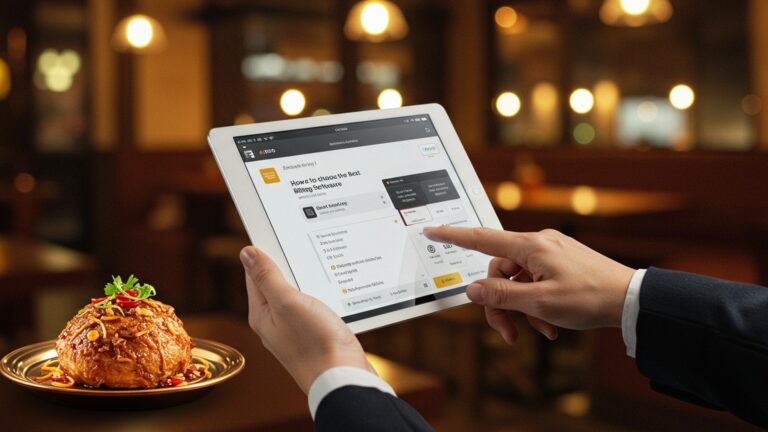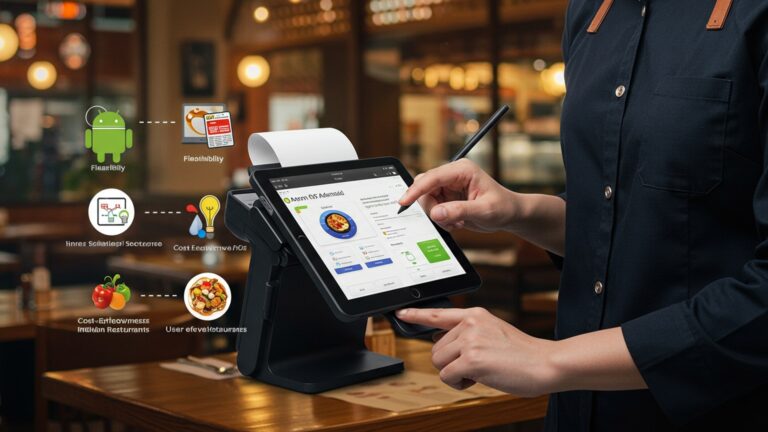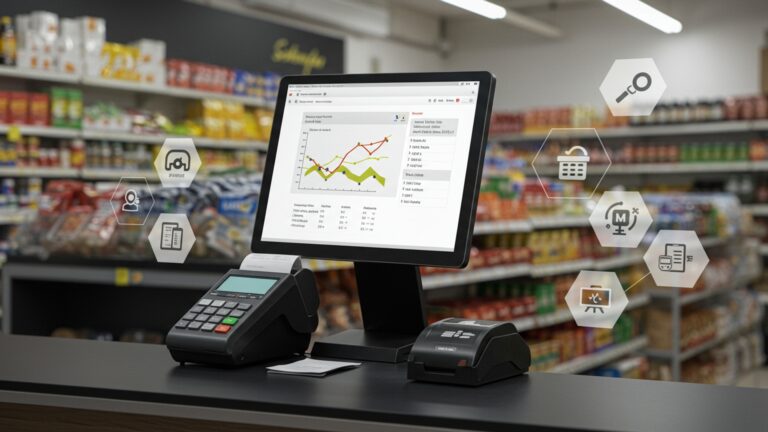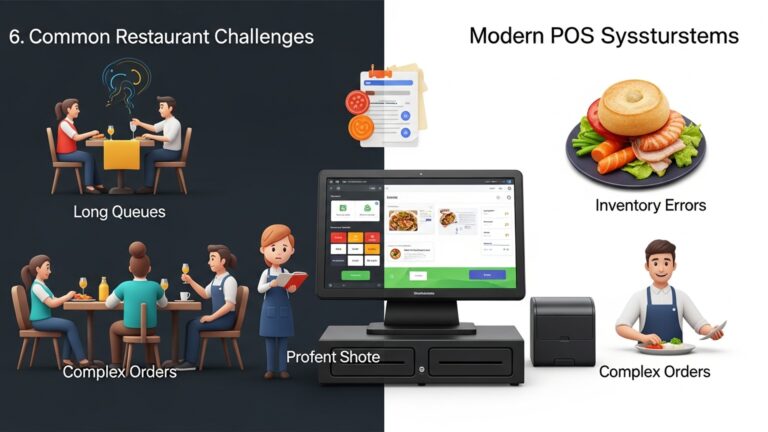Master 8 Ways Restaurant Billing Software Boosts Indian Business
In India’s intensely competitive and rapidly digitizing hospitality sector, efficient operational management is not merely an advantage but a necessity, especially with the surge in digital transactions via UPI and the integration of online delivery platforms. Modern restaurant billing software India provides a critical competitive edge, moving beyond simple invoicing to offer comprehensive solutions for real-time inventory control, dynamic staff management. insightful sales analytics. Leveraging advanced software streamlines daily workflows, minimizes costly errors. significantly enhances customer satisfaction, directly boosting a business’s bottom line in a market increasingly driven by speed and precision.

1. Streamlined Operations and Enhanced Efficiency
In the bustling landscape of Indian hospitality, efficiency is not just a buzzword; it’s the backbone of a successful restaurant. Restaurant billing software in India acts as a central nervous system, automating a multitude of tasks that traditionally consumed significant time and resources. From the moment a customer places an order to the final bill settlement, the software orchestrates a seamless flow, drastically reducing manual intervention and potential bottlenecks.
- Order Management
- Table Management
- Staff Productivity
Digital KOTs (Kitchen Order Tickets) are instantly sent to the kitchen or bar, eliminating handwritten slips, miscommunications. delays. This ensures that orders are processed faster and accurately, leading to quicker table turns, especially crucial during peak hours in a busy Indian eatery.
Staff can easily view table statuses (occupied, vacant, reserved), manage reservations. assign orders to specific tables. This prevents confusion, optimizes seating arrangements. ensures no customer is left waiting unnecessarily.
With automated processes, employees can focus more on customer service rather than tedious administrative tasks. This translates into a more attentive and efficient service team, enhancing the overall dining experience.
Consider a popular South Indian restaurant during the breakfast rush; manually jotting down dosa and idli orders, calculating individual bills. managing payments for dozens of tables can be chaotic. A robust restaurant billing software streamlines this, allowing staff to take orders on handheld devices, send them directly to the kitchen. generate bills in seconds, keeping the flow smooth and customers happy.
2. Unparalleled Accuracy and Error Reduction
Human error is an inevitable part of any manual process. in a restaurant, it can lead to significant financial losses and customer dissatisfaction. Restaurant billing software India fundamentally addresses this by digitizing and automating calculations, order entries. inventory tracking.
- Eliminating Calculation Mistakes
- Accurate Order Entry
- Reduced pilferage and wastage
The software automatically calculates item prices, discounts, taxes (like GST, which is complex in India). service charges. This removes the possibility of errors in addition or subtraction that can occur with manual billing, ensuring customers are charged correctly and the business doesn’t lose revenue.
Digital menus and order taking prevent misinterpretation of handwritten notes. If a customer orders a “Butter Chicken, less spicy,” it’s clearly recorded and relayed, reducing instances of wrong dishes being prepared or served.
By tracking every item sold and consumed, the software creates a clear audit trail, making it harder for discrepancies to go unnoticed.
Here’s a quick comparison of how accuracy differs:
| Aspect | Manual Billing | Restaurant Billing Software |
|---|---|---|
| Order Taking | Prone to mishearing, illegible handwriting, forgotten items. | Digital entry, clear and precise, direct to kitchen. |
| Bill Calculation | High risk of arithmetic errors, incorrect tax application. | Automated, accurate pricing, GST compliance. |
| Discount Application | Manual calculation, potential for errors or misuse. | Automated, system-defined rules, consistent application. |
| Reporting | Time-consuming, prone to data entry errors, difficult to review. | Real-time, error-free reports, easy data analysis. |
3. Faster Service and Improved Customer Experience
In the competitive Indian restaurant market, customer experience is paramount. Diners expect quick, efficient service. restaurant billing software plays a crucial role in delivering this.
- Rapid Billing
- Multiple Payment Options
- Personalized Service
Bills can be generated and presented to customers almost instantly, especially beneficial during busy periods or when guests are in a hurry. This reduces waiting times, a common pain point for diners.
Modern restaurant billing software in India integrates with various payment gateways, supporting UPI, credit/debit cards, mobile wallets. cash. This flexibility caters to diverse customer preferences and speeds up the checkout process.
By tracking customer preferences (e. g. , favorite dishes, special requests), some advanced systems allow staff to offer a more personalized and memorable dining experience, encouraging repeat visits.
Imagine a family celebrating at a popular Indian restaurant. With integrated billing, their bill arrives promptly, accurately reflecting all orders and discounts. They can split the bill easily using different payment methods, concluding their meal on a positive note, rather than waiting impatiently for a manual bill calculation.
4. Robust Inventory Management
Food costs are a major expense for any restaurant. Effective inventory management, powered by restaurant billing software, is key to controlling these costs and minimizing waste, especially with the diverse and often perishable ingredients used in Indian cuisine.
- Real-time Stock Tracking
- Waste Reduction
- Automated Reorder Points
- Recipe Management
The software automatically deducts ingredients from inventory as dishes are sold. This provides an accurate, real-time view of stock levels for items like basmati rice, paneer, spices. vegetables.
By knowing exactly what’s in stock and what’s selling, restaurants can make informed purchasing decisions, reducing over-ordering and spoilage of perishable goods. This is particularly vital for fresh produce and dairy, common in Indian cooking.
Set minimum stock levels. the software can automatically alert managers when items need to be reordered, preventing stockouts of popular ingredients that could halt kitchen operations.
Define recipes with precise ingredient quantities. The system then calculates the cost per dish, providing valuable insights into profitability and helping control portion sizes.
A restaurant specializing in biryani can track its rice, meat. spice consumption accurately. If their Basmati rice stock is low, the system flags it, preventing a last-minute panic purchase or, worse, running out of a core ingredient during dinner service.
5. Better Financial Control and Reporting
Understanding a restaurant’s financial health is critical for long-term success. Restaurant billing software provides comprehensive financial control and powerful reporting capabilities that go far beyond simple billing.
- Sales Analytics
- Profit and Loss Statements
- Tax Compliance (GST Ready)
- Employee Performance Tracking
Gain insights into daily, weekly, or monthly sales trends, peak hours. popular menu items. This data helps identify revenue drivers and areas for improvement.
Generate accurate P&L reports, allowing owners to clearly see their profitability, track expenses. make informed financial decisions.
In India, GST compliance is complex. A good restaurant billing software is designed to handle various GST rates, generate compliant invoices. simplify tax filing, reducing the risk of penalties.
Monitor individual staff sales, tips. shift performance, aiding in performance reviews and incentive programs.
For an Indian restaurant chain, consolidating financial data from multiple outlets manually would be a nightmare. Centralized billing software provides a unified dashboard, offering an aggregated view of sales, inventory. profits across all locations, simplifying accounting and strategic planning.
6. Data-Driven Decision Making
The wealth of data collected by restaurant billing software is a goldmine for strategic decision-making. It transforms raw transactions into actionable insights, helping Indian businesses stay competitive.
- Menu Optimization
- Pricing Strategies
- Staffing Optimization
- Customer Insights
Identify best-selling dishes and those that are underperforming. This data can inform menu changes, promotions, or even ingredient sourcing. For instance, if a specific curry isn’t selling well, the restaurant might consider modifying its recipe or removing it.
comprehend the impact of pricing changes on sales volume and profitability. Experiment with different price points based on demand and ingredient costs.
examine peak hours and days to optimize staff scheduling, ensuring adequate coverage without overstaffing, thereby controlling labor costs.
Track customer purchase history, average spend. visit frequency. This data can be used for loyalty programs, targeted marketing campaigns. understanding customer demographics.
A cafe in a metropolitan Indian city can use its restaurant billing software to discover that coffee sales peak between 9-11 AM and 4-6 PM. This insight allows them to schedule more baristas during those times and run promotions on snacks that pair well with coffee during those specific windows.
7. Seamless Integration with Other Systems
Modern restaurant billing software in India isn’t just a standalone tool; it’s part of a larger ecosystem. Its ability to integrate with other essential business systems amplifies its utility and streamlines operations further.
- Online Ordering Platforms
- Payment Gateways
- CRM (Customer Relationship Management)
- Accounting Software
Many Indian restaurants rely heavily on platforms like Zomato, Swiggy. their own online portals. Seamless integration means orders from these platforms are automatically pushed to the POS and kitchen, eliminating manual re-entry and reducing errors.
As mentioned, integration with various digital payment solutions (UPI, card machines, mobile wallets) ensures smooth and quick transactions, catering to the diverse payment habits of Indian consumers.
Connecting billing data with CRM helps build detailed customer profiles, enabling personalized marketing, loyalty programs. better customer service.
Exporting sales and expense data directly to accounting software like Tally or QuickBooks simplifies bookkeeping, financial reconciliation. tax preparation.
An Indian restaurant using this integration can take an order from Swiggy, have it appear instantly on their POS, send the KOT to the kitchen. automatically update their inventory and sales reports, all without manual intervention. This level of automation is critical for handling the high volume of online orders common in India.
8. Scalability and Growth
For ambitious Indian restaurateurs, the ability to scale operations efficiently is a key factor in success. Restaurant billing software provides the infrastructure to support growth, whether it’s expanding a single outlet or opening multiple new branches.
- Multi-Outlet Management
- Adaptability to Business Changes
- Standardization of Operations
- Reduced Training Time
Centralized software allows owners to manage multiple restaurant locations from a single dashboard. This includes monitoring sales, inventory. staff across all outlets, providing a holistic view of the entire business.
As a restaurant grows, its needs evolve. The software can often be customized or upgraded to accommodate new menu items, pricing structures, loyalty programs, or operational changes without requiring a complete system overhaul.
With a unified system, best practices in billing, order taking. inventory management can be easily replicated across all branches, ensuring consistent service quality and efficiency.
As new staff are hired for expansion, a consistent, user-friendly billing system reduces training time and ensures they can quickly become productive.
Imagine a successful local chaat shop deciding to open branches in different cities. A scalable restaurant billing software India solution would enable them to manage all outlets from their head office, standardize their menu and pricing. get real-time performance insights for each new location, facilitating smooth and rapid expansion.
Conclusion
Embracing modern restaurant billing software isn’t merely an upgrade; it’s a strategic imperative for Indian businesses aiming for sustainable growth. We’ve explored how it fundamentally transforms operations, from eliminating manual errors and accelerating service to providing invaluable data insights that drive smarter decisions. This isn’t just about faster billing; it’s about a complete operational overhaul that boosts efficiency and enhances the customer experience, a crucial factor in today’s competitive landscape. To truly optimize your processes, consider how modern POS software solutions can streamline every transaction. My personal tip for Indian restaurateurs is to not just seek out robust features. to prioritize software that offers seamless integration with digital payment platforms and inventory management, reflecting the current trends in our market. By doing so, you’re not just buying software; you’re investing in a future-proof ecosystem that reduces revenue leakage and empowers your team. The time for manual ledger dependence is long past; seize this opportunity to digitize, optimize. watch your business flourish with unparalleled precision and profitability.
More Articles
7 Essential Features Your Restaurant Billing Software in India Must Have
How to Choose the 5 Best POS System Options for Your India Restaurant
10 Essential Features for Restaurant POS Software India Success
7 Smart Benefits of a Restaurant POS System for Small Restaurants India
How to Pick the Best Restaurant POS System for Small Restaurants India
FAQs
What exactly is this “Master 8 Ways” restaurant billing software?
It’s a smart billing solution built specifically for Indian restaurants, designed to simplify operations and boost your business. It focuses on 8 key areas to make everything from order taking to inventory tracking smoother and more profitable.
How does it actually help Indian restaurant owners?
It’s tailored for the unique challenges here! Think faster billing, easy GST compliance, better control over your kitchen orders (KOTs). smart reports that help you make better decisions, all contributing to happier customers and a healthier bottom line.
Can you tell me more about these “8 ways” it improves business?
Sure! It helps with things like lightning-fast billing, precise inventory control to cut down on waste, efficient Kitchen Order Ticket (KOT) management, detailed sales analytics, boosting staff performance, improving customer experience, simplifying GST compliance. integrating online orders seamlessly.
Is it complicated to use for someone who isn’t great with computers?
Not at all! It’s designed with a super user-friendly interface. Your staff can pick it up quickly, even if they’re not tech experts, which means less training time and more focus on serving great food.
Does it handle all the GST and tax stuff for Indian businesses?
Absolutely. It’s fully compliant with Indian GST regulations. It automates calculations and generates all the necessary reports, making tax filing a breeze and helping you avoid common errors.
What kind of restaurants is this software best for?
Whether you run a small chai shop, a bustling quick-service restaurant, a cozy cafe, or a large fine-dining establishment, this software is scalable and adaptable to various types and sizes of Indian food businesses.
How will this software actually help me make more money or save costs?
By speeding up service, minimizing errors, optimizing your inventory to reduce wastage. giving you valuable insights from sales data, it directly helps you cut operational costs and increase your overall revenue and profitability.






